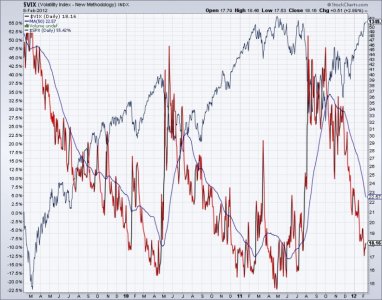- Reaction score
- 758
The Autotracker has its limitations because of the complicated math needed. I think Tom went with % because it is the easiest and likely the most fair, but I've always been curious what the equation is. Ever wonder why, if for example, you are at -7% and you are 100% in the C and it goes up 0.42% and when you check the Tracker that night you're sitting at -6.65%? For some reason you didn't improve by the entire 0.42%. This happens all the time in the Tracker, and I've noticed that my gains and losses are more similar to the actual fund gain or loss when I'm closer to the zero line. That's because of the complicated math probably used in the Tracker's equation, but I and wondering in print here.
If Tom started us each on Jan 1 at $1000 and applied it to whatever funds we were in and used real share prices and their daily $/share changes, I'm sure his work load would go through the roof. But, you'd also see that regardless of share price, % gain is the one and only performance element you should be concerned about. Don't get me wrong, I am very pleased with this site and the Autotracker.
I always wonder the same thing. If the S fund was up 0.50% why my tracker % didn't go up that percentage. Actually the tracker %'s and my real account %'s almost match on a daily basis's. Once in awhile we are off by 0.01% or so. The only time we are way off is the day that my contribution is deposited into my account. We all start with $100,000.00 at the beginning of the year and it is a very complicated program. But it keeps all of us on a level playing field as long as we are honest on how much we have in each Fund.

